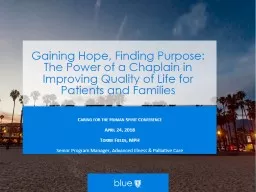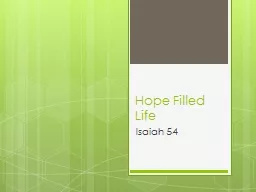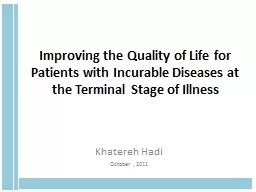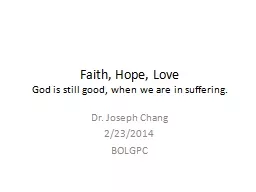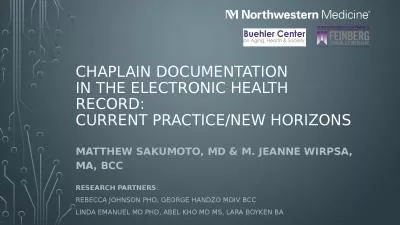PPT-Gaining Hope, Finding Purpose: The Power of a Chaplain in Improving Quality of Life for
Author : tatyana-admore | Published Date : 2018-10-30
Caring for the Human Spirit Conference April 24 2018 Torrie Fields MPH Senior Program Manager Advanced Illness amp Palliative Care Financial Disclosures No financial
Presentation Embed Code
Download Presentation
Download Presentation The PPT/PDF document "Gaining Hope, Finding Purpose: The Power..." is the property of its rightful owner. Permission is granted to download and print the materials on this website for personal, non-commercial use only, and to display it on your personal computer provided you do not modify the materials and that you retain all copyright notices contained in the materials. By downloading content from our website, you accept the terms of this agreement.
Gaining Hope, Finding Purpose: The Power of a Chaplain in Improving Quality of Life for: Transcript
Download Rules Of Document
"Gaining Hope, Finding Purpose: The Power of a Chaplain in Improving Quality of Life for"The content belongs to its owner. You may download and print it for personal use, without modification, and keep all copyright notices. By downloading, you agree to these terms.
Related Documents

